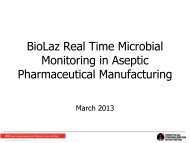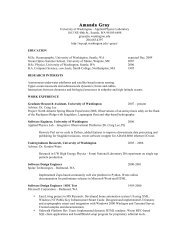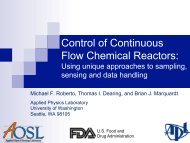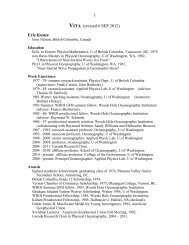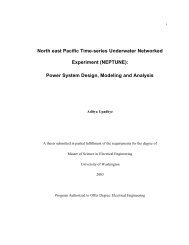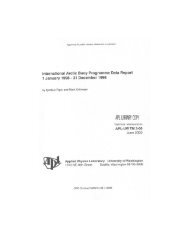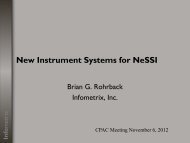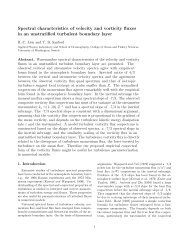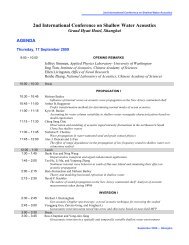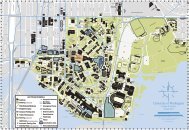2009 Biennial (PDF, 12 MB) - Applied Physics Laboratory-University ...
2009 Biennial (PDF, 12 MB) - Applied Physics Laboratory-University ...
2009 Biennial (PDF, 12 MB) - Applied Physics Laboratory-University ...
Create successful ePaper yourself
Turn your PDF publications into a flip-book with our unique Google optimized e-Paper software.
Fundamental Science<br />
enliSted to counter tHreat<br />
The Office of Naval Research has undertaken a long-term basic research<br />
initiative to support scientific studies that may lead to significant discoveries<br />
in countering improvised explosive devices. The five Navy university-affiliated<br />
laboratories were tasked with the program in 2005; since then several research thrusts<br />
at APL-UW have shown promise. The program employs basic scientific research to<br />
increase the predictive capabilities of counter-IED efforts and to detect IEDs at distance<br />
and speed before they can cause harm.<br />
Sum-Frequency Spectroscopy<br />
One project seeks to detect trace levels of explosive materials adsorbed on surfaces.<br />
The method employs the second-order nonlinear optical technique of sum-frequency<br />
vibrational spectroscopy. Sum-frequency spectroscopy works by shining two laser<br />
beams of different optical frequencies (i.e., different colors) onto the surface of a<br />
material. Photons with frequencies equal to the sum of the two incoming frequencies<br />
can be detected, and the intensity (or number) of those photons can be related to<br />
the concentration of contaminants on the surface. Because under many conditions<br />
the sum-frequency response of a surface depends on contaminants adsorbed on the<br />
surface but not the bulk material itself, sum-frequency spectroscopy has a long history<br />
of use as a surface probe in biochemical and chemical systems. This effort seeks to<br />
demonstrate its effectiveness in detecting explosives adsorbed on surfaces that might<br />
be found in a typical urban environment.<br />
Results have shown that some explosives have extremely large nonlinear optical cross<br />
sections, meaning they generate many sum-frequency photons when the incoming<br />
laser beams are tuned to a certain intensity. This means detection levels are low enough<br />
to sense the presence of these explosives at concentrations as low as a few hundred<br />
nanograms per square centimeter. Researchers have detected explosive residues on<br />
surfaces likely to be encountered in real-world environments and are now investigating<br />
detection techniques in the presence of chemical interferences from environmental<br />
pollutants and compounds produced by the degradation of explosives.<br />
ReseARCh highLights<br />
16 APL–UW <strong>2009</strong> BienniAL RePoRt APL–UW <strong>2009</strong> BienniAL RePoRt 17



